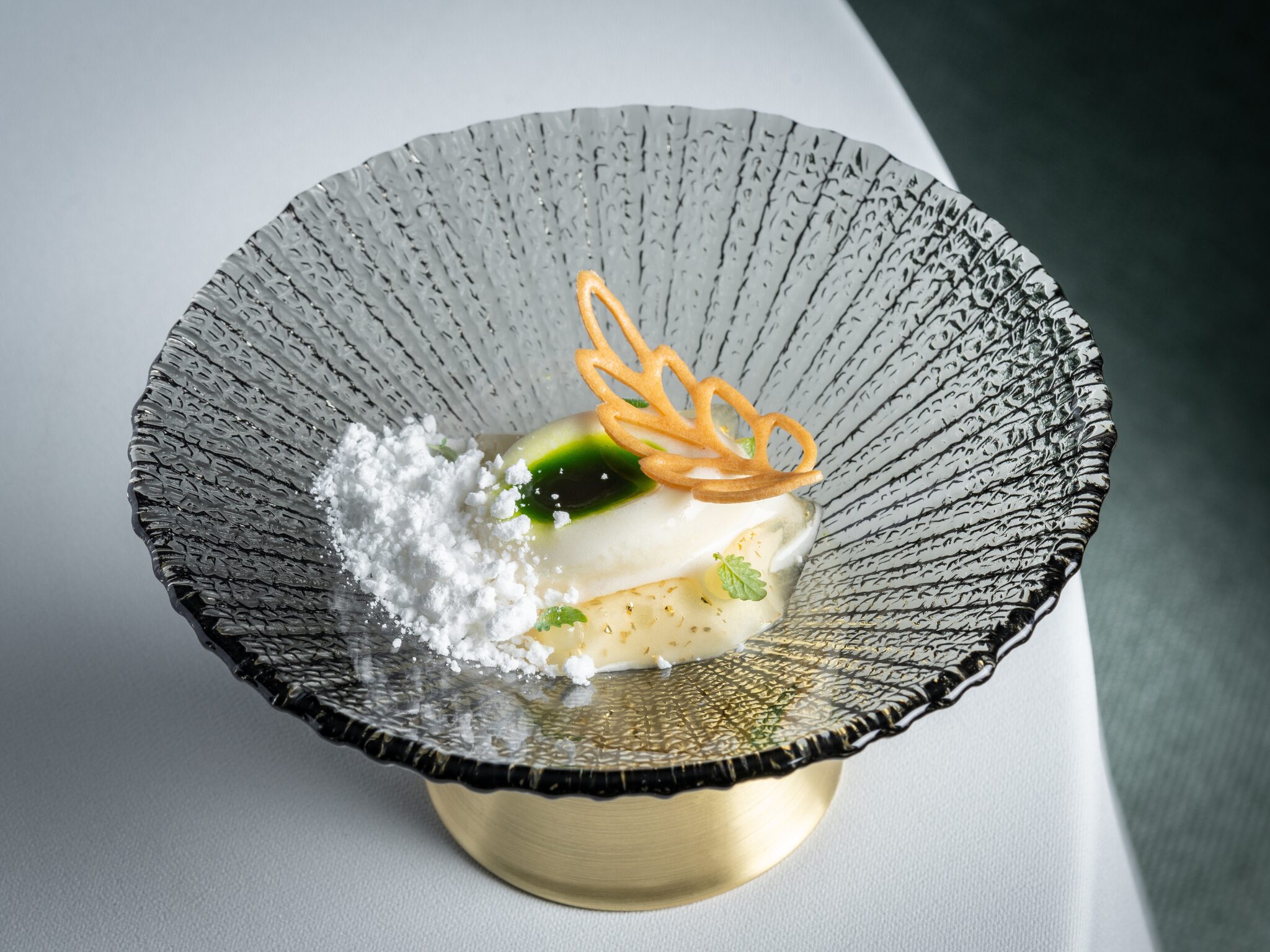6 Mins Read
Mia, one of Bangkok’s newly crowned Michelin-starred restaurants, is catering to vegans and vegetarians with dedicated tasting menus. But you won’t find any plant-based meat here.
Bib Gourmands are a big thing in Bangkok. It’s a Michelin marker of places with great food without the prohibitive prices of the high-end, starred eateries the tyre manufacturer has become famous for. It’s a sign of pride in the Thai capital, something I discovered during my three weeks there earlier this year.
A bunch of the Bib Gourmand places cater to vegans – from perhaps the most famous Pad Thai restaurant in the world, to a mango sticky rice stall – but if you’re after luxury dining as a plant-based eater, the options are few and far between.
At Soi 26 in Sukhumvit – Bangkok’s bustling district lined with malls, street food, the metro, red lights, and bars – Pongcharn ‘Top’ Russell and Michelle Goh are hoping to change that. At Mia, one of Thailand’s newest Michelin-starred restaurants, the emphasis is on inclusivity… and vegetables.
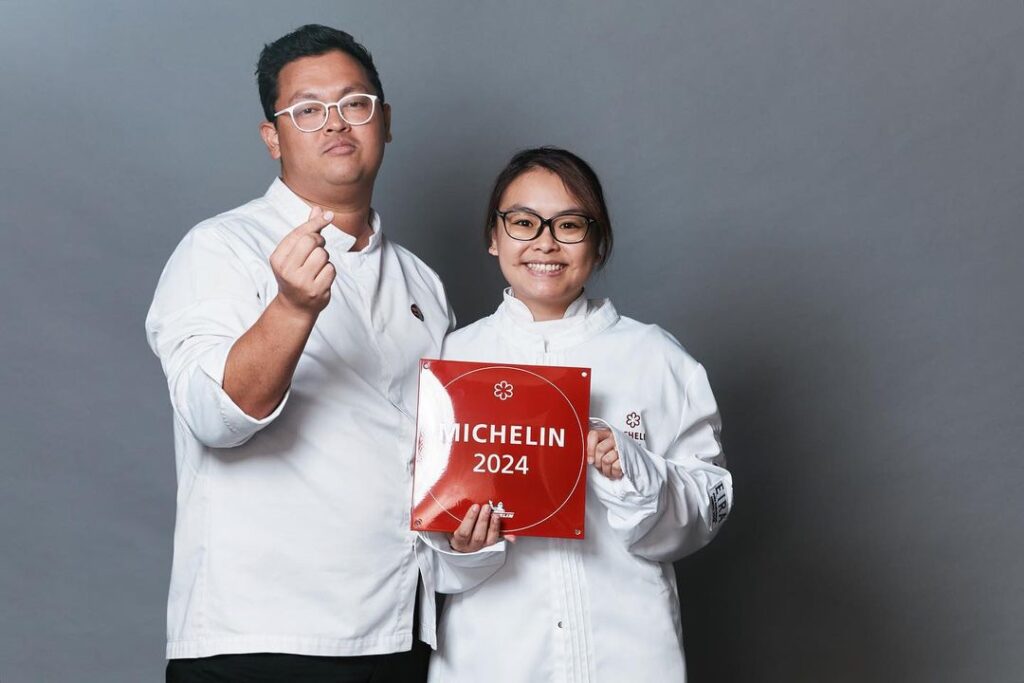
The fine-dining establishment gives an Asian tint to European cuisine, and has three tasting menus: one for meat, one vegetarian, and one vegan. “[Ever] since we were doing a tasting menu, we’ve always had a vegan menu,” Goh tells me. “And the reason for that is, I used to go out with my friend who was vegan and we would go to non-vegan restaurants, and I always felt like what they were able to offer her was a very small selection. And it was kind of sad.”
So catering to different diets was top of mind for Goh, who hails from Malaysia and is the country’s youngest woman to earn a Michelin star, and Russell (an alum of London’s Gauthier Soho). The idea was to have a place where non-vegans could come with vegans and “still have a fantastic experience”.
What a Michelin-starred vegan tasting menu looks like
Mia’s eight-course vegan menu starts with a small bite, followed by four snacks, bread, two cold starters, a hot starter, two mains, a pre-dessert, a dessert, and finally, bite-sized petit fours. Some highlights include Campari spritz granita, printed-open ravioli, and a signature Snickers bar.
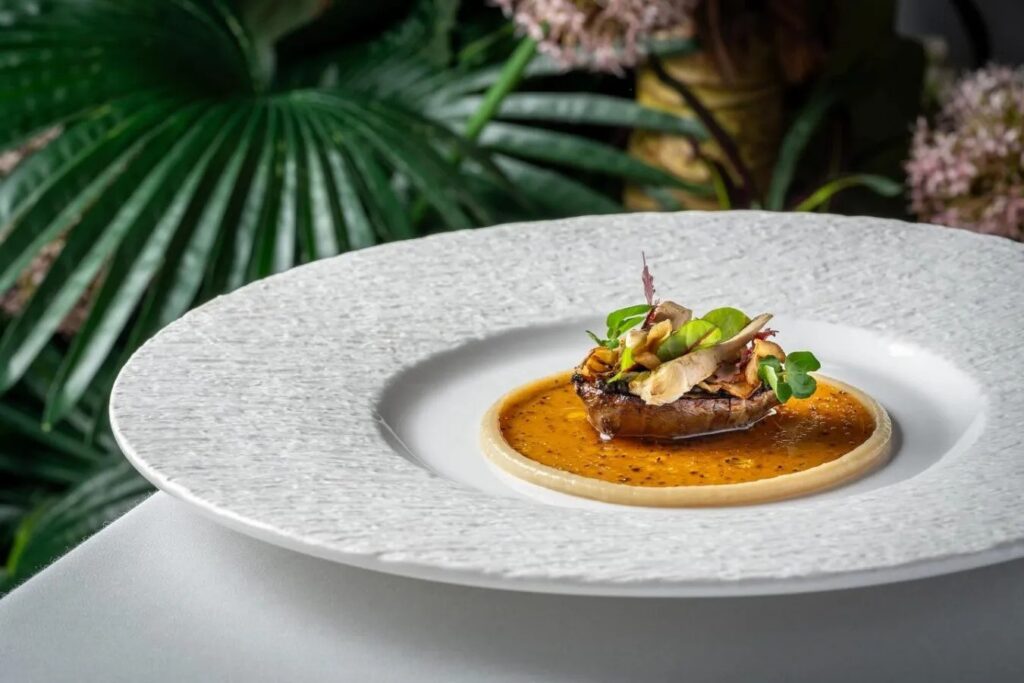
The current main course is a roasted Jerusalem artichoke with a truffle-ponzu dressing. “We want to have something that is more meaty for our main course,” explains Goh. “We roast a whole Jerusalem artichoke and what you get is that really earthy flavour, and we pair it with the truffle dressing to amp up the umami and earthy tones.”
She adds: “But we also have some fresh herbs that go on top, so we use watercress to add the peppiness… some radicchio to add bitterness, and… some prune puree on top to add sweetness.
“So when you have it all together, it’s kind of like a heavier, meatier dish without having any meat in it.”
One of Goh’s favourite dishes on the menu is the Snickers bar, given her love for a chocolate-peanut-caramel profile. “We make a coconut dulce de leche as our caramel base, [which is] just a reduction of coconut cream with coconut sugar, and then it gets reduced into this kind of toffee texture,” she says.
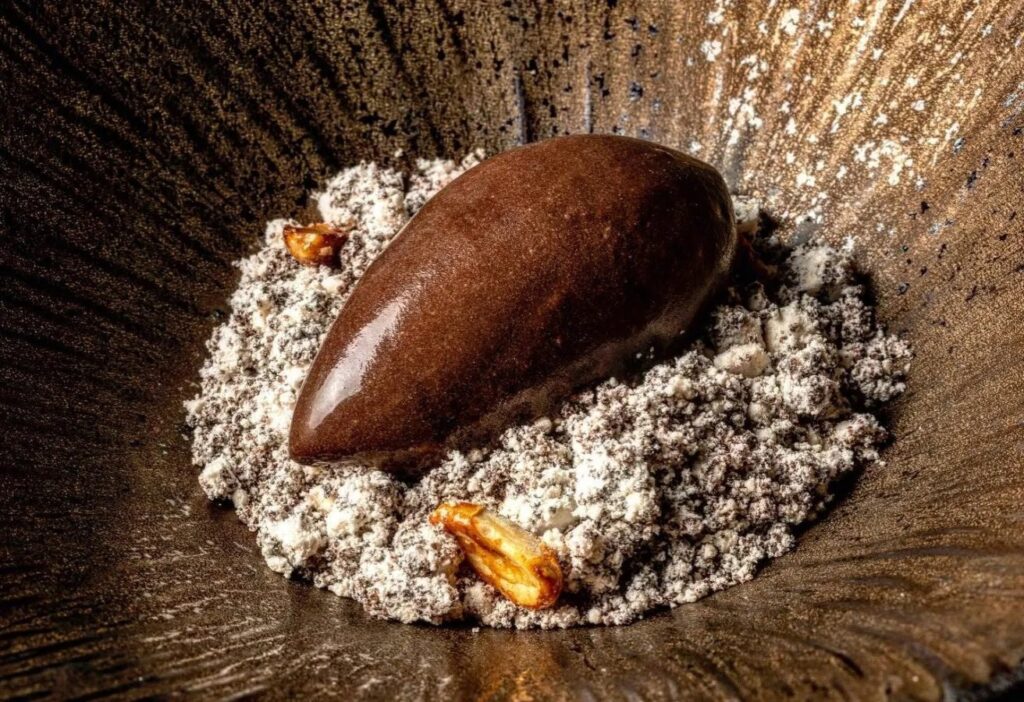
“We pair that with our homemade peanut cream, so it’s like peanut butter but we make ours in-house. After that, we have a chocolate crumble made from dark cocoa powder, and also some peanut maltose. We take maltodextrin – which is like a starch – and we emulsify that with our peanut-infused oil to give it that really roasted peanut flavour, and that acts as our crumble.
“After that, we have our candied peanuts. And the last thing on top is our dark chocolate sorbet. [This] is made only with water, a little bit of glucose, 70% dark chocolate and also some cocoa powder.”
Vegetables over meat analogues
Goh believes guests can expect a full Michelin-star fine-dining experience, “regardless of the fact that this is a plant-based menu”. “We have had quite a few people come in who are not vegan and have tried our vegan menu, and have felt that it was like any other fine-dining tasting menu out there… You really, really don’t feel like you’re missing out,” she says.
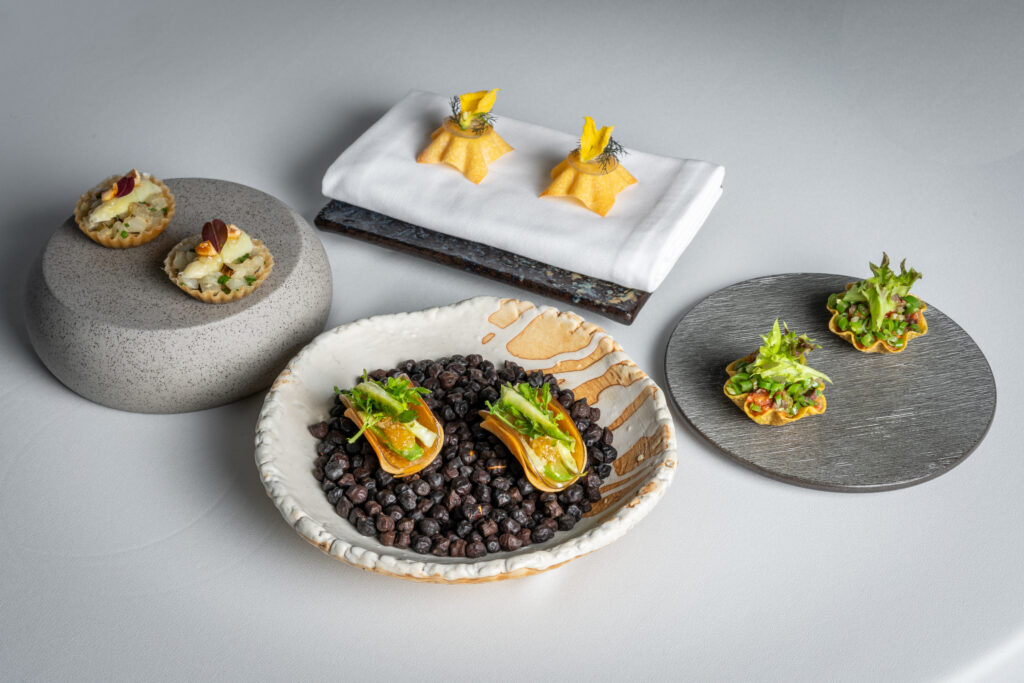
The menu is based on seasonal produce, and changes three to four times a year. So for the spring season, there’s a taco with green asparagus, a white asparagus-macadamia tart, a grilled fennel steak, and the artichoke main. “We find what is seasonal at the time, and then we try to highlight those fruits and vegetables in a way that it’s the main focus of the dish, and we find complementing flavours to go along with that,” says Goh.
As evidenced by the ‘meaty’ Jerusalem artichoke, the spotlight on vegetables was a conscious decision. “It’s just a personal preference, but I don’t really like a lot of meat substitutes. And also, I feel from a fine dining perspective, meat substitutes don’t really add value to a dish,” she explains. She and Russell endeavour to prepare vegetables in a way that’s “unique, delicious, hearty”, and doesn’t feel like just “a plate full of garnishes”.
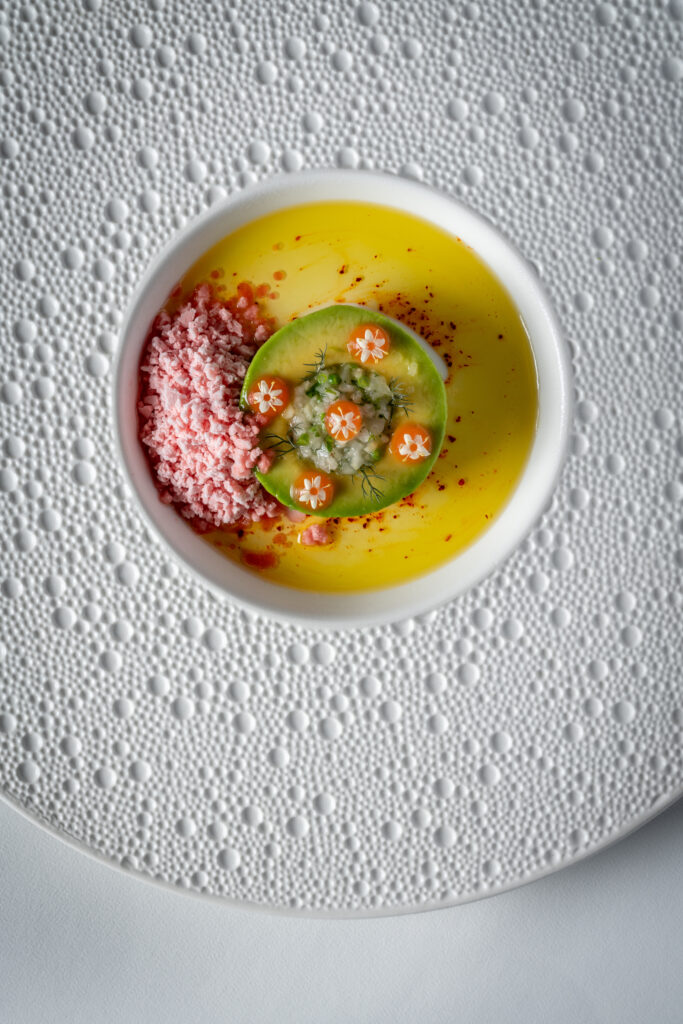
While offering meatless menus is a good sign of inclusivity, having meats like foie gras or caviar doesn’t bode well with the planet. “We are by no means going for a Green star,” Goh says when I mention the climate aspect. “But we do try to make more conscious decisions in our restaurant to limit food waste and… farming practices. Although it is not our main goal, it is something we do try to improve wherever we can. However, we are still a modern European restaurant, so I don’t really see us never using foie gras again.”
Catering to consumer trends
But has Mia noticed a greater demand for plant-based options from its patrons? “People are starting to become more health-conscious and more environmentally conscious, and because of that, a lot of people are switching to plant-based diets,” says Goh. “That’s why we have seen quite an increase in our demand for it.”
The lack of plant-based meat also speaks to consumer trends. A 1,500-person survey by Madre Brava in January found that while 72% of Thai people are aware of traditional plant proteins like tofu and seitan, much fewer (43%) know about meat analogues. And of those who do, 63% believe meat alternatives are healthier, but 70% find them too processed.
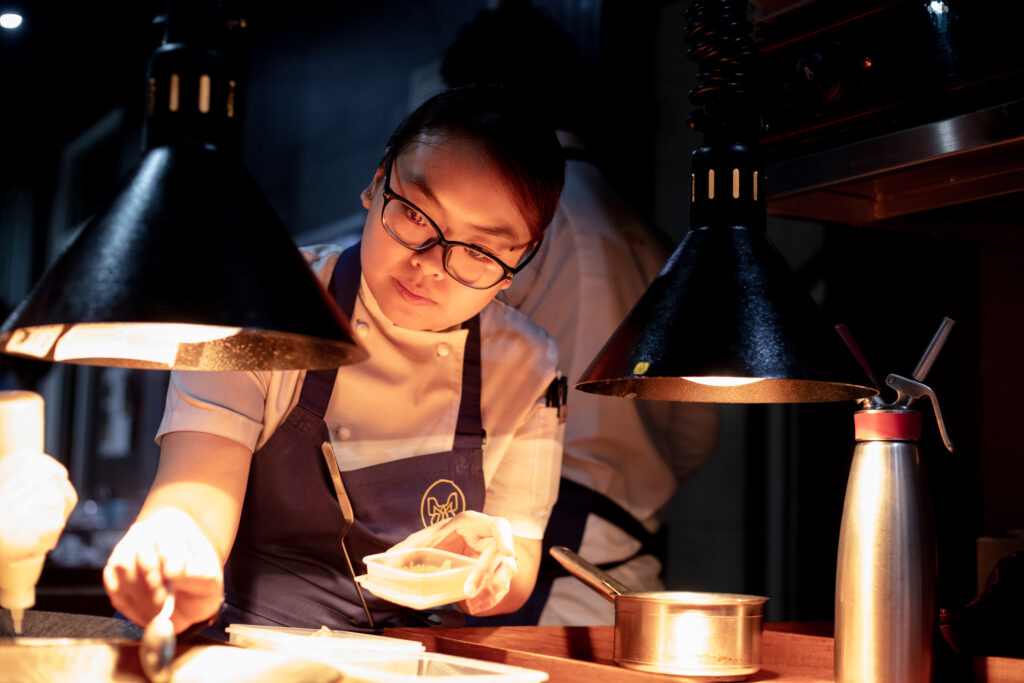
So presenting vegan tweezer cuisine in an accessible and familiar way is key for restaurants like Mia. The poll also showed that the often-higher price of meat analogues is a barrier for 64% of the respondents. By eschewing these products, Mia is able to offer its vegan tasting menu for a lower price than the one with meat.
The plant-based tasting menu ฿4,450 ($121) plus taxes, while the meat-based option sets you back ฿4,850 ($132). The price difference comes from the presence of expensive animal products like caviar, beef and foie gras on the latter. “Our plant-based menu does feature a lot of imported vegetables and fruits, which do contribute to the price as well,” says Goh.
She adds: “What we would like to highlight is the true flavour and complexities that we’re able to extract from cooking fruits and vegetables in such different ways.”


